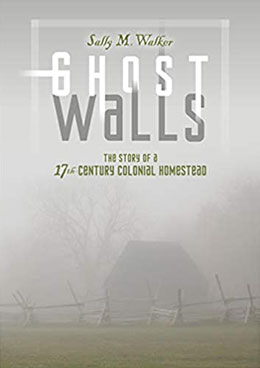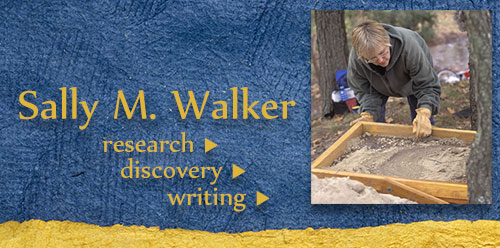
Ghost Walls: The Story of a 17th Century Colonial Homestead
About the Book
In 1638, John Lewger made a home in the wilderness of the New World. He named his house St. John’s. St. John’s walls witnessed the first stirrings of the great struggles that would dominate the continent for the next three centuries: The unimaginable wealth of the New World’s crops and natural resources. The promise of religious tolerance under a new model of government. The injustice of slavery and the betrayal of native peoples. They witnessed the struggle for equality between men and women. One hundred years later, the house sat abandoned. Its walls fell and time erased all above ground remains. St. John’s walls were silent for more than two centuries. But they weren’t lost. Ghost Walls is the story of how teams of scientists and historians coaxed St. John’s house into telling its many tales.
Resources
The first three permanent British colonies were: James, Plymouth, and Boston.
Enjoy your virtual visit to colonial America’s fourth permanent British colony, St. Mary’s City. You’ll find a wealth of information about the colonial town where St. John’s house stood.
Reviews
“Just as Walker’s Written in Bone (2009) dealt with forensic anthropology at colonial sites in Virginia and Maryland, her latest book introduces the work of archaeologists at another significant location. Using the excavation at the site of St. John’s, a long-lost house in St. Mary’s, Maryland, as the focal point, she opens the book with the harrowing story of a slave cruelly killed outside the house in 1656, then begins the discussion of excavations at the site, which began in 1962 and continue today. The book traces the house’s history chronologically while also detailing the methods and discoveries of archaeologists as well as related research on the period. Along the way, Walker offers a great deal of miscellaneous information about colonial life in Maryland, from building practices to legal disputes to governance to women’s roles. The many illustrations include digital drawings of the house at various periods and archival documents as well as many color photos of sites, artifacts, and costumed interpreters. A detailed resource for those studying colonial Maryland, this well-researched book will also interest aspiring archaeologists.” (Booklist)
“The site of a 17th-century home owned by a colonial Maryland official reveals the story of its origins with the help of historians and archaeologists. An early citizen of the Maryland colony, John Lewger built a home for his family and servants that reflected his stature. One hundred years after its establishment, the house was gone, and the role it played in the early years of American history was seemingly lost. However, historians and archaeologists were able to literally unearth information about the structure of the house and lifestyle of its inhabitants. The tension inherent in operating a system of indenture alongside a growing number of slaves is just one of the stories revealed by historical documents. With great attention to archaeological detail, Sibert medalist Walker explores the work of the scientists who studied every aspect of the site, both physically and through historical records.” (Kirkus Reviews)
“Teens fascinated by archaeological fieldwork will appreciate Walker’s inclusion not only of the dig but the reasoning behind many of the archaeologists’ conclusions (often tentative and changeable) concerning use of space and artifacts. There are also plenty of good stories for history buffs, from the gruesome murder of a servant (likely a slave), to trials concerning deaths of neighboring Yaocomaco Indians at the hands of white settlers, to the occasion of the first-known vote cast by a person of African descent in colonies.” (Bulletin of the Center for Children’s Books)

written by Sally M. Walker
Carolrhoda Books, Oct 2014
hardcover: 978–0761354086
136 pages, ages 10 and up

